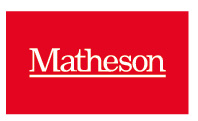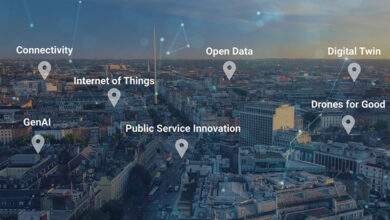Learning from experience: delivering the National Development Plan


The delivery of the ambitious National Development Plan – a process facilitated by planning reforms, enhanced construction technology and governmental oversight – will sustain rapid economic and population growth in Ireland. Matheson’s Projects team explore the context.
Ireland’s new €116 billion National Development Plan (NDP), published in February 2018, is the most ambitious single capital spending plan the Irish Government has ever published. The NDP comes at a time of growth and optimism: the Irish economy has grown faster than any other EU economy for the past four years and the Irish Government expects the country’s population to increase by at least one million people by 2040 (which many believe is a conservative estimate). The intention of the NDP is to fund projects that will accommodate such rapid growth as sustainably as possible.
The key message for the private sector is that many of the projects included in the NDP are intended to be delivered through collaboration between the public and private sectors and are designed to improve Ireland’s attractiveness as a leading global destination for foreign direct investment. However, many in the private sector (following recent developments in Irish infrastructure in particular) may ask themselves: how will the Irish Government learn from experience and implement this plan without delay and without broken promises?
Following the publication of the NDP, the Department of Public Expenditure and Reform (DPER) confirmed that it would turn its attention to implementation immediately. DPER announced the establishment of:
• a ‘high-level’ Project Ireland 2040 Delivery Board (which covers the NDP);
• an Infrastructure Projects Office (within DPER); and
• a Construction Sector Working Group.
Each of these have different roles to play in monitoring, coordinating and progressing all NDP/Project Ireland 2040 projects. DPER will also update its Capital Projects Tracker, which will bring much-needed transparency and progress updates to both taxpayers and investors.
DPER’s focus on coordination is novel and will be welcomed by infrastructure investors, particularly those who may be less familiar with the workings of the Irish market.
There are a number of reforms and initiatives driven by other branches of Government which will also be critical to the implementation of the NDP.
National Planning Framework
The National Planning Framework is a detailed strategy mapping out the development of Ireland’s physical infrastructure from now until 2040. The Government has targeted the five cities of Dublin, Cork, Limerick, Galway and Waterford for 50 per cent of overall national growth between them.
The National Planning Framework will be the first national-level planning framework with legislative backing: the Irish Government plans to enact legislation mandating that most major planning decisions taken in Ireland must have regard to its priorities. A new Independent Office of the Planning Regulator (OPR) will be responsible for monitoring the implementation of the National Planning Framework.
Permitting reforms
In general, Ireland’s planning processes work well and efficiently. A developer who submits a robust planning application (that is rooted in the planning and policy framework and compliant with Irish and EU law) will often experience speedy decision-making. However, some major projects can experience delays in the planning process, followed by court challenges. The Government has announced that new rules will reduce the period during which a court challenge to a planning permission (by judicial review) can be launched from eight to four weeks. Consideration is being given to whether the rules on who is eligible to apply for judicial review will be restricted so that a party must prove they have a sufficient interest in the development and show it has a direct impact upon them (but subject to the Court’s discretion). There are some existing legal constraints on a narrowing of eligibility that will have to be navigated. In order to expedite proceedings, the rules of Court may also allow for a ‘written submissions only’ process which would avoid the need for court hearings. That would be relatively unprecedented in the Irish system and will require careful consideration. There are numerous other efficiency changes that could also be made to the planning and court processes (based on tried and tested processes) that might be less controversial and easier to implement. Hopefully, those potential changes are also under analysis.
Digital transition the construction industry
The Irish Government’s implementation push will be complemented by a very definite private sector emphasis on construction technology. The Government continues to encourage the use of BIM (the design platform for the future) and other digital technology in construction. The National BIM Council – consisting of stakeholders from the public and private sector – was formed to develop a roadmap for the digital transition of Ireland’s construction industry. The roadmap is designed to secure funding for digital transition development in Ireland, to set performance goals and to support the current Programme of Government.
“Many of the projects included in the NDP are intended to be delivered through collaboration between the public and private sectors and are designed to improve Ireland’s attractiveness as a leading global destination for foreign direct investment.”
This year has seen continued use of BIM technology particularly in the context of PPP contracts and public sector contracts generally and this trend is likely to continue in 2018. There is a strong interest in both the public and private sector in further integrating BIM in 2018. It will be interesting to see how the use of BIM develops from a contractual perspective in 2018. So, for example, will a BIM protocol be developed in this jurisdiction? Will that protocol necessitate changes to the standard Irish construction contracts? What types of construction contracts/associated procurement methods are best used where BIM technology is involved? These are all questions which will need to be asked and answered throughout the year. In addition, trends such as higher definition surveying and geolocation, digital collaboration and mobility and future-proofing of design and construction will be the ‘modus operandi’ of delivering Project Ireland 2040 projects.
Public Private Partnership (PPP)
It is encouraging to see a fresh impetus within both Government and industry to deliver many of the key high-value Irish infrastructure projects that have been mooted for some time and included in the NDP, such as Dublin’s Metro Link and Luas expansions, DART heavy rail expansion, the second parallel runway at Dublin Airport and the M20 motorway, together with ambitious education, health, justice and social housing projects.
However, for such big-ticket projects, the devil will be in the detail: it is still not clear how the Government intends to procure, finance and deliver most of the major projects in the NDP. The Government remains ambiguous about its appetite for the use of the PPP delivery model, despite the model’s very successful track record in Ireland over the past 10 to 15 years.
Crucially for the private sector, the NDP includes a commitment to continue to employ the “very useful” Public Private Partnership (PPP) delivery model and/or “alternative financing” methods, particularly for revenue-generating projects, subject to value for money assessments. The NDP notes that a review of the use of PPPs in Ireland concluded that, “PPPs can play a very important role in the delivery of public capital investment projects contained in the National Development Plan”. However, this review has not been published and no particular project has been earmarked for PPP delivery.
So, adding up the sum of the parts i.e., an incredibly ambitious capital spending plan, a national planning framework (coupled with permitting reforms) and a new digital era for delivery of construction projects, it all points to what will hopefully be rapid growth in the very short term.

For more information:
Garret Farrelly
Partner and Head of Energy and
Infrastructure Group
T: 01 232 2074
E: garret.farrelly@matheson.com
Rhona Henry
Partner and Head of Construction and
Engineering Group
T: 01 232 2110
E: rhona.henry@matheson.com
Nicola Dunleavy
Partner
D: + 353 1 232 2033
E: nicola.dunleavy@matheson.com
Conor Blennerhassett
Solicitor
D: +353 1 232 2704
E: conor.blennerhassett@matheson.com






